Highlights:
- Weekly rainfall generally exceeded evapotranspiration last week, which stabilized soil moisture levels
- Most streams and creeks in Delaware saw a decline in streamflow in spite of the rainfall due to existing below normal groundwater conditions
- Groundwater levels continue to decline in most areas of the state as environmental water demands and consumption continue to ramp up for the growing season
- Development of a severe drought this summer would be unlikely if the warm, wet conditions predicted by NOAA’s Climate Prediction Center were to come to fruition.
Statewide Drought Discussion
Ample rainfall returned to most of Delaware last week. A general 1 to 1.5 inches of rain fell over the last 7 days, with portions of southern Sussex County receiving over 2 inches. Overall, most locations in Delaware ended up at least breaking even in terms of the water balance, as rainfall largely outpaced evapotranspiration across the First State. This also helped keep soil moisture conditions stable last week, as the state generally saw a 2-4 percent increase in soil moisture between May 12th and May 19th (Figure 1).
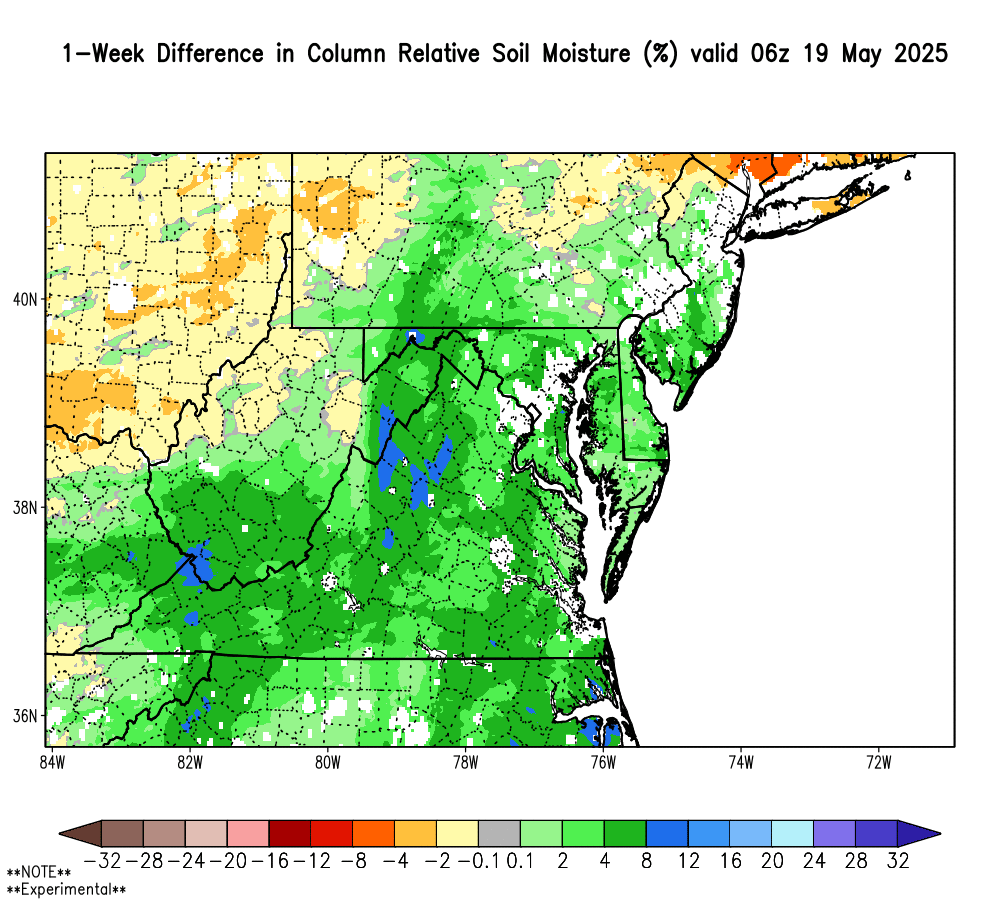
Despite reasonably wet conditions last week, streamflows generally declined in New Castle County, particularly on the Red Clay and White Clay Creeks. Streamflow on the Brandywine River at Wilmington remained stable. With water conditions still in “catch up” mode across northern Delaware and in the headwaters of the northern creeks, streamflows remain below their respective median values for this time of year. In fact, the USGS stream gauge on Blackbird Creek at Blackbird is in the 1st percentile for this time of year, indicating that it’s at or near the lowest it has ever been for this time of year going back to 1956. Streamflows for most stream gauges in Kent and Sussex Counties also continue to be below their respective median flows overall, and well below their median flows for this time of year.
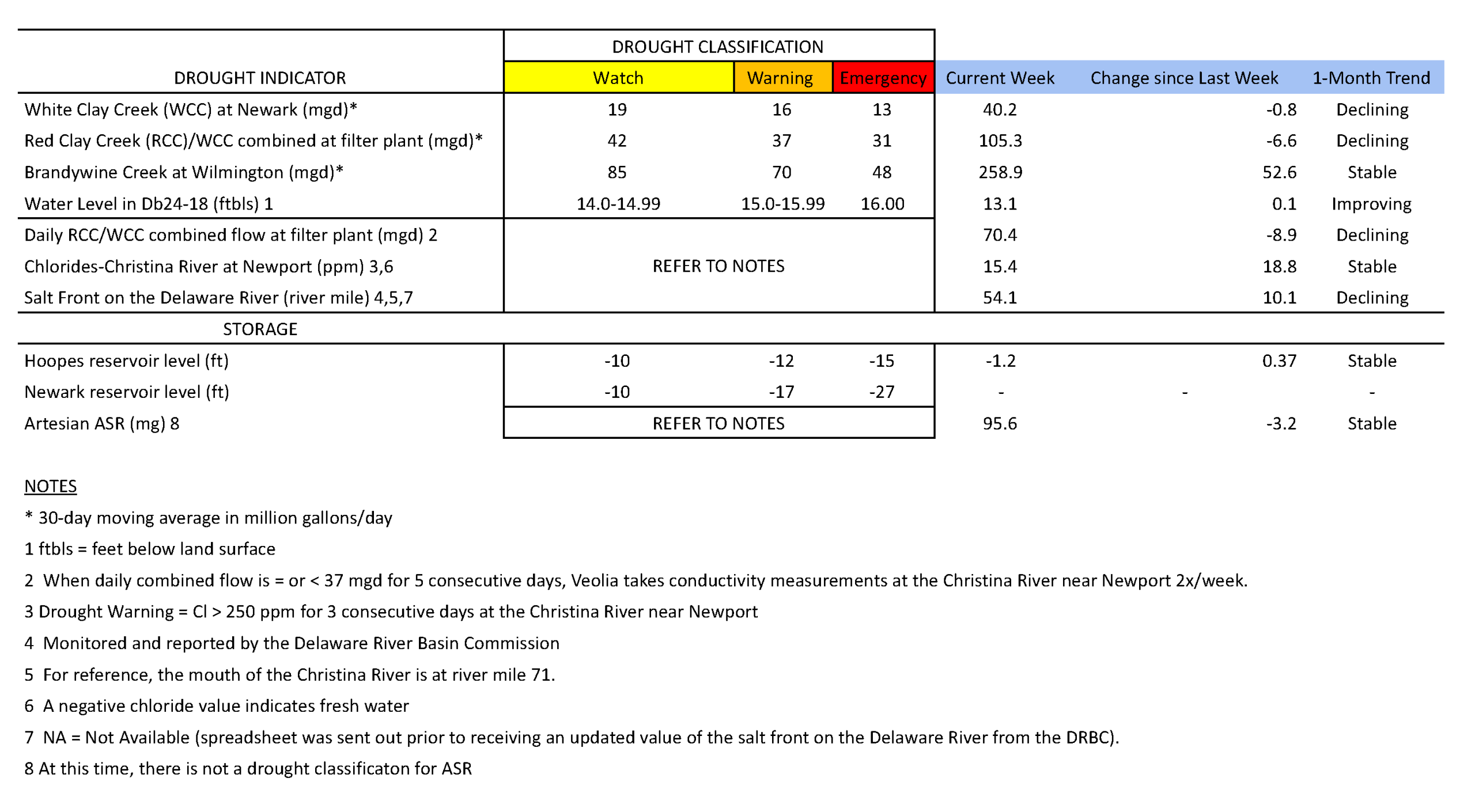
Chloride concentrations in the Christina River near Newport remain well below the first threshold of concern (250 ppm) at approximately 15 ppm. Sufficient fresh water is flowing down the Christina, pushing back any chlorides that may be present. The last time the chloride concentration was above 250 ppm was about nine weeks ago during the first week of March (263.2 ppm). In general, chloride conditions continued to remain low throughout the first half of May.
Nearly every long-term groundwater monitoring well in the unconfined aquifer (i.e., surficial aquifer) has started to show declining groundwater levels. The exception is DGS well Db24-18 (located just south of Newark), which increased to 13.1 ft below land surface (Table 1). This well is above its drought watch threshold, but continues to remain approximately one foot below normal for this time of year. The water level in this well typically ranges between 8.0 and 12.6 feet below land surface during May. The unconfined (i.e., surface) aquifer in the Coastal Plain of Delaware, which tends to have sandier soils, has shown significant declines in groundwater level over the last several weeks. USGS well Mc51-01a is once again below the 25th percentile for this time of year after rebounding a bit back in the early spring (Figure 2).
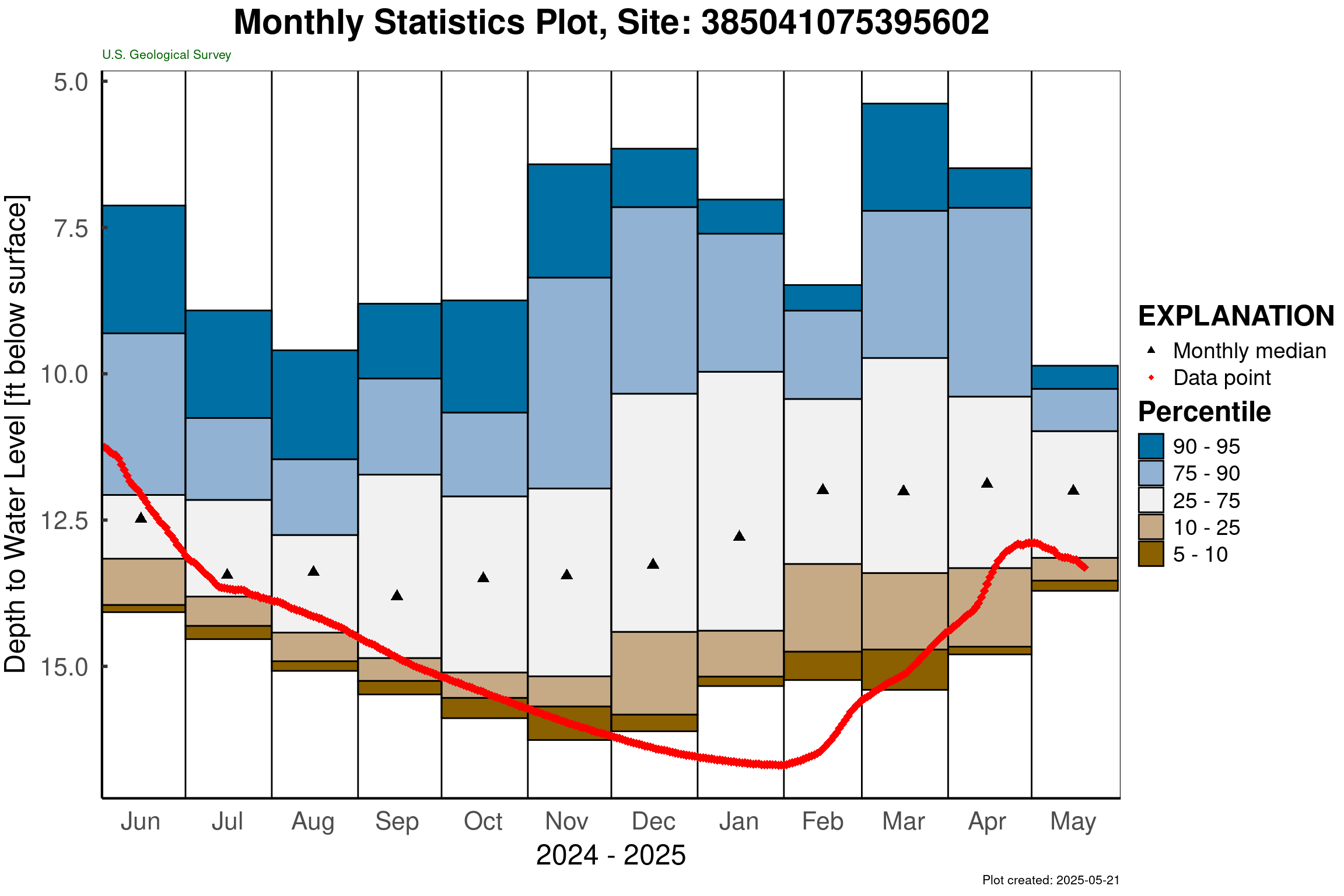
At this point in the growing season, we’ll need well above normal rainfall to see our groundwater levels trend back in the upward direction. While it is concerning to see the groundwater levels declining, most well levels are quite a bit above the levels we saw back in January and February.
Weather and Climate Outlook:
The outlook for rainfall next week isn’t awful, but it does leave something to be desired with only 0.5 to 1 inches of rainfall forecast. Once again, to keep up with the water being lost from the environment through evapotranspiration, we need 1-1.5 inches of precipitation each week in May-July just to break even in the water balance. Hopefully the weather system affecting over the next few days will exceed expectations.
Looking farther out, NOAA’s Climate Prediction Center (CPC) has produced the first seasonal outlook for this summer. Figure 3 shows the temperature forecast for June through August, with Delaware and most of the eastern seaboard of the United States solidly in the above normal temperatures category. Meanwhile, the CPC is expecting our region to see above normal precipitation this summer (Figure 4).
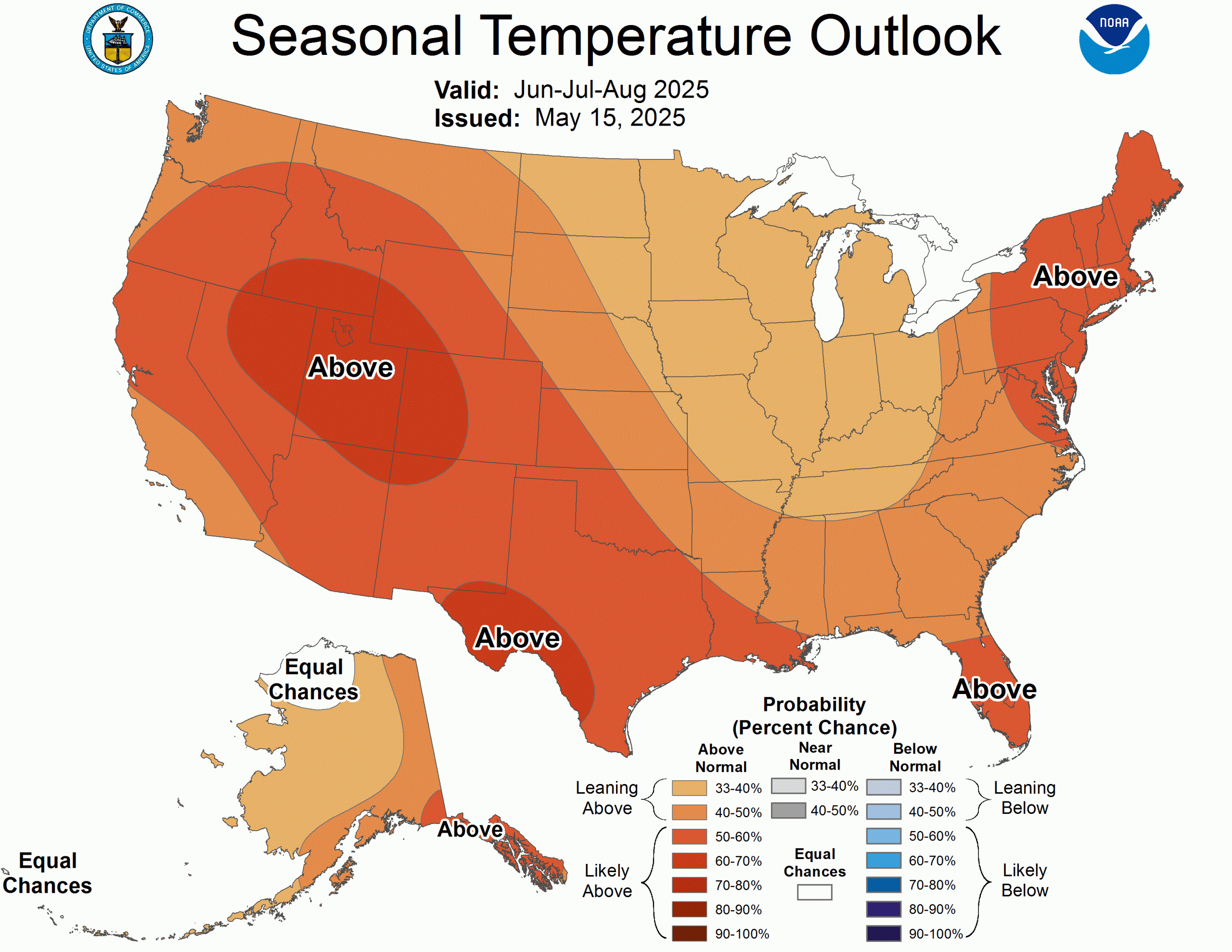
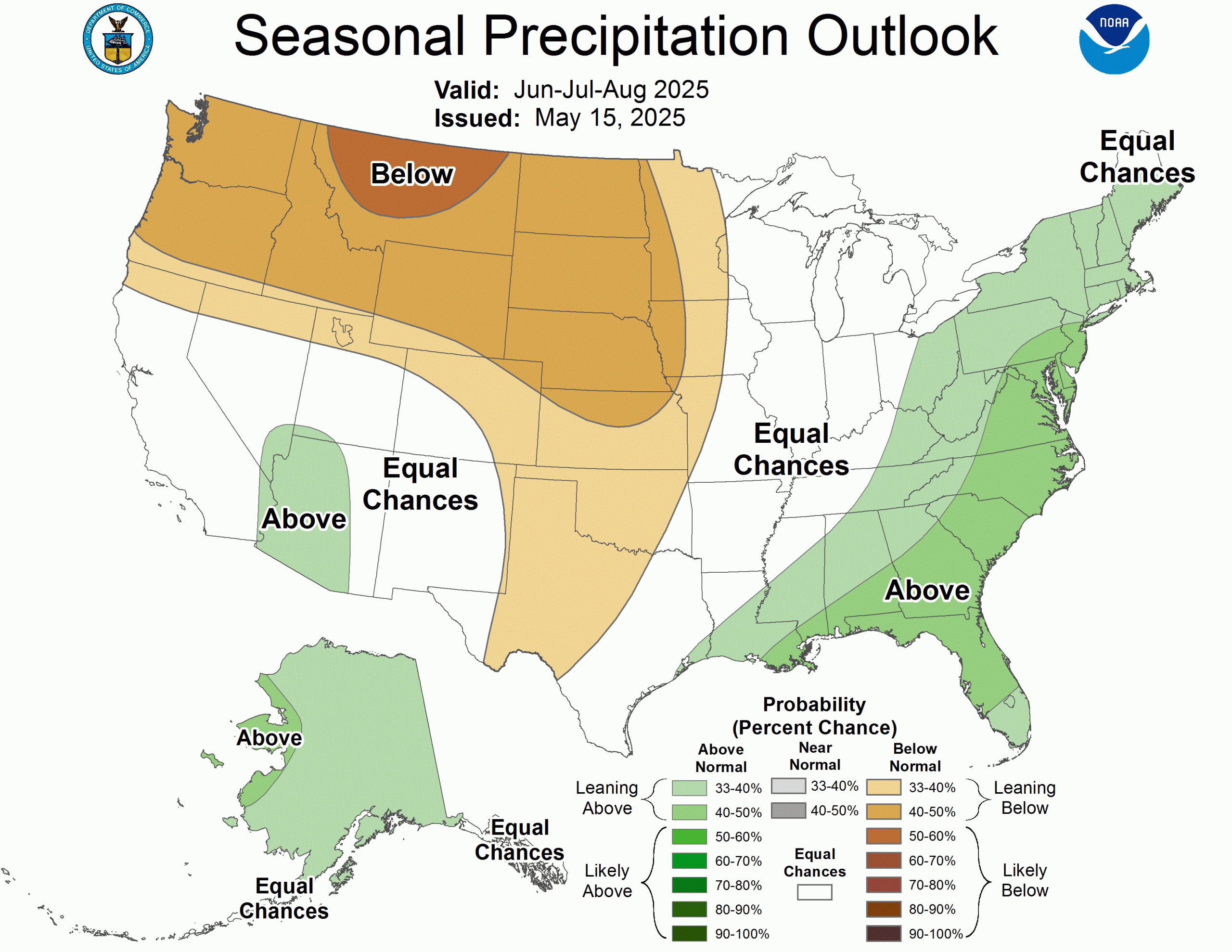
These seasonal conditions, if they were to come to fruition, would probably prevent the onset of a severe drought in Delaware this summer. However, with warmer than normal temperatures, any multi-week dry period could result in a short duration, “flash” drought, which can be problematic for agriculture and occasionally water quality in some water bodies prone to large algal blooms.
